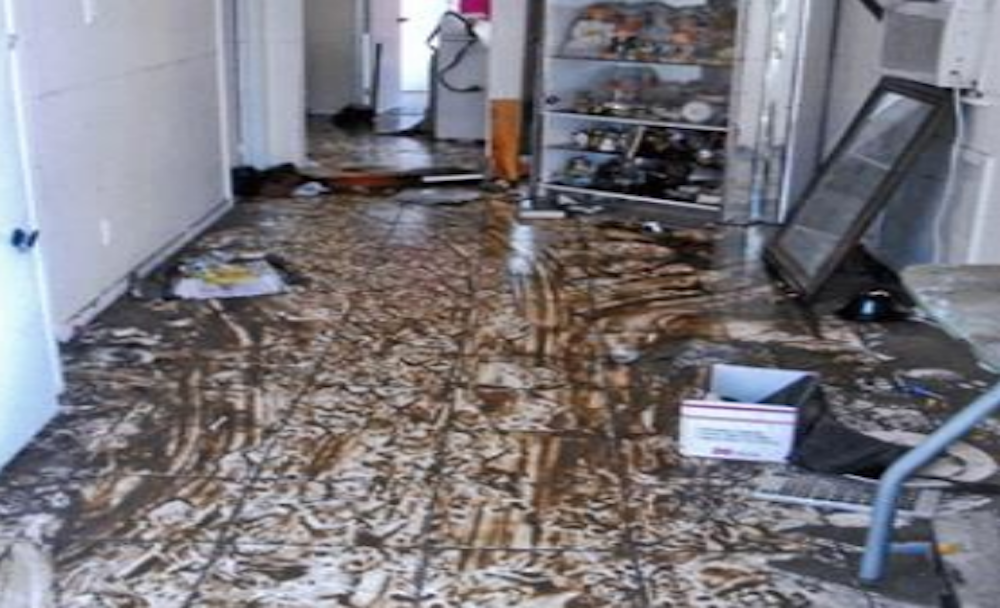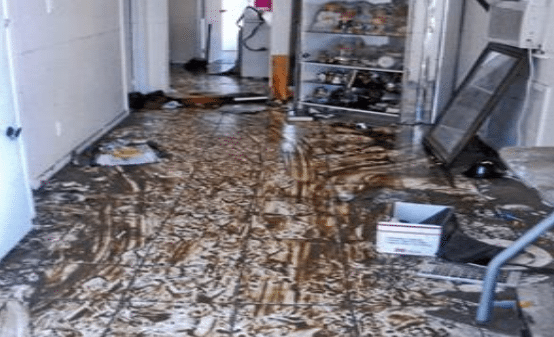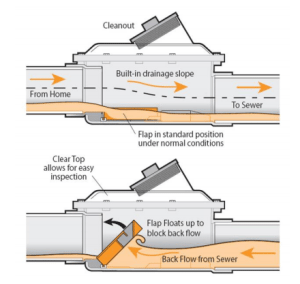Circling The Drain: Patience Wanes For State’s Plan To Fix Sandy Sewage Backups


When Superstorm Sandy’s record-setting 13-foot surge rolled into southern Brooklyn, it overwhelmed the city’s aging sewer infrastructure. Millions of gallons of ocean water mixed underground in the city’s stormwater and sewage pipes, which are part of the same system, and burst out of the ground into streets, businesses, and homes. Thousands of houses, many of which escaped the storm surge, had their basements and first floors flooded with a toxic soup of raw and partially-treated sewage.
“If you didn’t see it and you didn’t smell it and you didn’t walk through it, you have no idea what it was like,” said Manhattan Beach Community Group president Judy Baron, whose basement and first floor were flooded with a mix of salt water and untreated sewage.
Baron was one of 14 community members who pushed through a proposal in the NY Rising committee for the southern Brooklyn peninsula, which includes Manhattan Beach, Brighton Beach, Coney Island, and Sea Gate, to address sewage backups during major storms. A similar proposal was introduced in the Sheepshead Bay and Gerritsen Beach committee. The project would provide financial assistance for home and business owners to install sewer cut-off valves to prevent overflowing sewers from spilling into their buildings. In the southern Brooklyn peninsula, the committee allocated $2.6 million for the project. In Gerritsen and Sheepshead Bay, the committee agreed to put up $5.7 million.
“Most of the homes in our community were not devastated by water, they were devastated by sewer backup,” said Community Board 15 chairwoman Theresa Scavo, who was on the committee in Sheepshead Bay and Gerritsen Beach. “A lot of these homes had three or four feet of backed up sewage. Now, if you have these cut-off valves installed, the flap closes and prevents any backup into a home.”
The NY Rising Community Reconstruction (NYRCR) Program, established in Sandy’s aftermath, took $700 million in federal funds to create resiliency measures in 124 storm-impacted communities across New York State. Representatives from the Governor’s Office of Storm Recovery met regularly with committees made up of community leaders to draft proposals, including resiliency studies, green infrastructure projects, and disaster response plans.
In southern Brooklyn, the practicality of the sewer cut-off valves generated a lot of excitement among committee members. However, three years after Sandy and more than a year-and-half after the money was first allocated, many involved in the committees lament they have seen no progress in putting the funds to use. And the close call last month, when Hurricane Joaquin nearly lashed the East Coast with 130mph winds, demonstrated a need for greater urgency in moving forward on these projects.
“Three years have gone by and I don’t see anything. And I think that’s across the board,” said Scavo. “After the storm, everybody was ready to jump to action: ‘We’re going to do this, we’re going to make plans.’ It’s three years down the road and I don’t see anything. Nothing has changed.”
Alex Zablocki of the Governor’s Office of Storm Recovery promised the proposals were moving forward. In fact, he explained, the agreement with the U.S. Department of Housing and Urban Development, which allotted the funds for NY Rising, mandates the money be obligated by September, 2017. The funds have to be spent by September, 2019.
However, the scale of NY Rising, as well as the process of working with other city and federal agencies involved in their own resiliency efforts, means turning the committees’ ideas into tangible projects will take time.
“A lot of work goes into actually taking these concepts and ideas from these plans and making them a reality, So it’s not as simple as throwing money at a project and then implementing it.” Zablocki said.

To implement the cut-off valve proposal, NY Rising officials had to work with the city’s Department of Environmental Protection to determine if installation would have any negative consequences on the sewers. (A study revealed there aren’t, Zablocki said.)
At this point, Zablocki said NY Rising is on the cusp of rolling out a request for proposals to find a contractor who can identify how to provide homeowners with cut-off valves. The contractor would be tasked with evaluating homes in the area to better understand the cost of installation. The agency also needs to decide whether there needs to be guidelines to weed out candidates if the pool of applicants exceeds the amount of available money.
Several committee members wondered if the Office of Storm Recovery was frittering away money on contractors and studies, at the expense of Sandy victims who would benefit from the cut-off valves.
“I wouldn’t go shopping with these guys at all,” said Pat Singer, a committee member and director of the Brighton Neighborhood Association. “A lot of money went to consultants. And I thought: What a waste. We had all these millions of dollars and it’s doing nobody any good.”
Another proposal, introduced in the Sheepshead Bay and Gerritsen Beach committee, would involve setting up backflow prevention measures, similar to the cut-off valves, directly into the city’s sewers. The committee allocated $740,000 towards the project, but because it involves building on city-owned property, the proposal is stalled while officials from the governor’s office work with city agencies. Representatives from NY Rising were not able to provide a timeline on when that project would begin.
However, there has been notable progress on other proposals introduced by the committees. The project to replace Sea Gate’s damaged flood barrier is currently in the design phase. The agency is also seeking a landscape architect for their $3.9 million streetscapes program in the southern Brooklyn peninsula, which would involve replacing many of the trees destroyed during Sandy. The trees, as well as other landscape enhancements are able to mitigate storm water run-off. NY Rising also recently rolled out its effort to help small business owners better prepare for future emergencies. In a partnership with the city, the Office of Storm Recovery launched its first series of workshops for business owners this week.
One of the brightest developments currently breaking ground, is the plan to retrofit the Gerritsen Beach firehouse and The Vollies hall to serve as disaster recovery centers. The Gerritsen Beach Volunteer Fire Department (The Vollies) signed the papers for the project to move forward last month. The $2.4 million project, which involves adding second floors, applying flood-proofing, and installing new emergency-response equipment for both buildings, is expected to be completed by next year.
“The whole firehouse was wiped out by Sandy,” said Vollies fire chief Doreen Garson. “This way, it can be pretty much storm-proof and can be a relief center after a storm.”
However, Garson expressed skepticism she would see resiliency measures to protect her entire community during her lifetime. The NY Rising committees allocated money for studies to assess the feasibility of building flood barriers to protect Sheepshead Bay, Gerritsen, and Manhattan Beach. However, those projects have taken a backseat to the U.S. Army Corps Of Engineers’ flood-control project in the area around Jamaica Bay, according the Office of Storm Recovery.
“You have to start somewhere,” Garson said. “There are going to be studies upon studies upon studies. This is probably going to be for our great grandchildren.”




